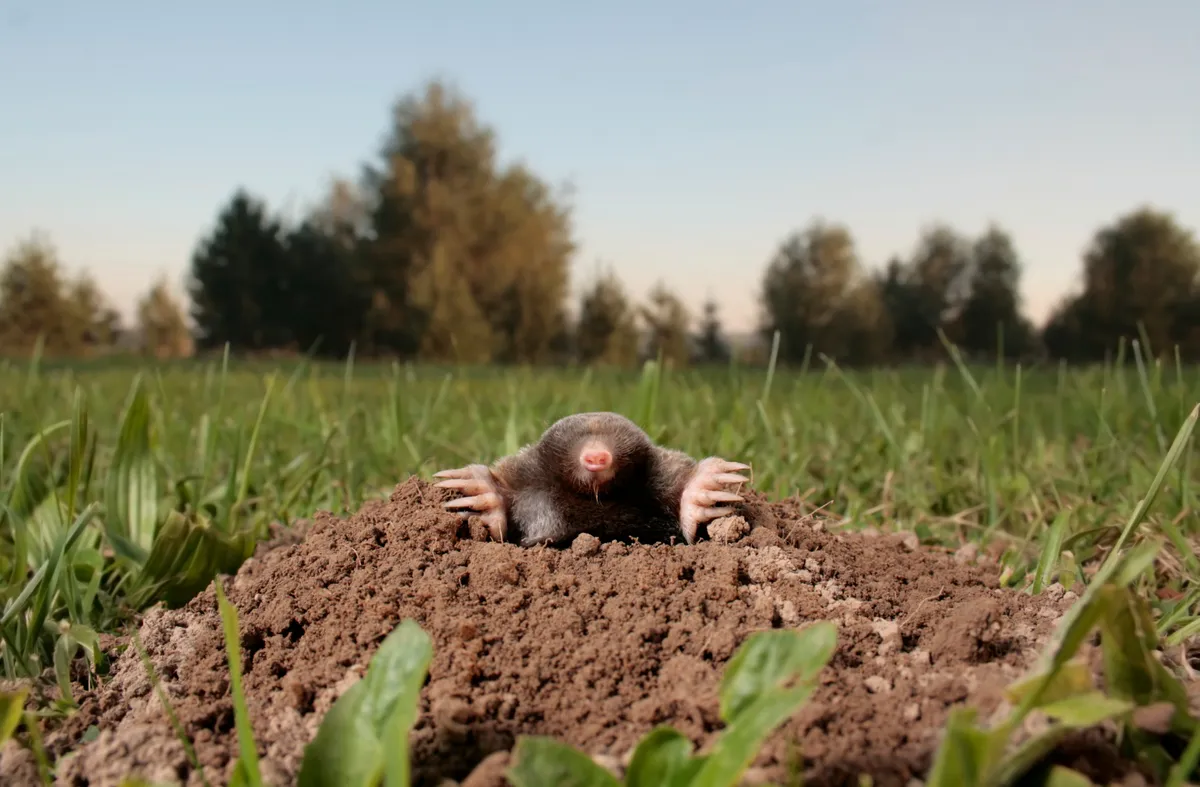"Few biologists have studied moles seriously – the experts tend to be professional mole-catchers,” says Derek Crawley, co-ordinator of the UK’s National Mammal Atlas project. “Part of the problem is that molehills are not a reliable guide to population size or where these animals occur, but simply a sign of recent tunnelling activity. Most tunnels are invisible – there’s no indication that the moles exist.”

Once a mole has excavated its network it has no need to extend or leave its home, provided there is a frequent supply of prey falling in – mainly earthworms, millipedes, centipedes and beetles. “But moles pop up more often than you might think,” says Crawley. “A mole may rapidly surface when trying to detour around an underground boulder or stonework in its path. Or it may be searching for new food supplies in a drought, when the ground is hard and invertebrate prey is scarce. Cave-ins, flooding and waterlogged earth can also force moles to evacuate.”
Juveniles often surface as they abandon their mother’s territory, leaving a fresh spoil heap with a telltale hole at the centre. “This is why you notice a surge in molehills in autumn,” Crawley explains. “You may also spot long ridges, pushed up by an animal travelling just below the surface. Moles will disperse this way if they can, as it means they’re less vulnerable to stoats, owls and buzzards.”

Sadly cat owners are most likely to see moles, because their pets bring back live victims to play with: “It seems that cats somehow manage to swipe through the loose soil at an active molehill to snatch the mole unawares.”
Did you know?
- With the exception of nursing females, each mole lives in its own tunnel system.
- Keep a lookout for ‘fortresses’ up to 50cm tall created by moles as emergency above-ground nests. Most mounds are by rivers or wetlands or on low-lying floodplains.
Get involved
Send sightings of British mammals to the new National Mammal Atlas run by the Mammal Society

